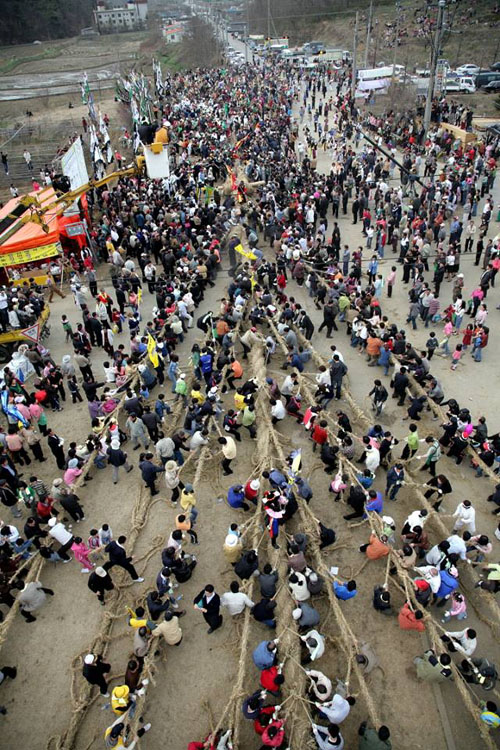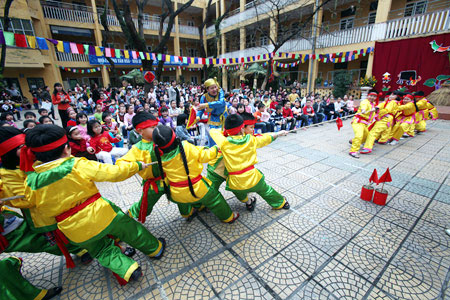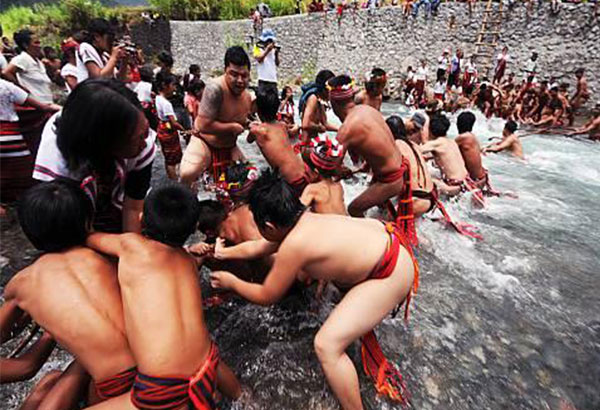On December 2, 2015, ritual tug of war games practiced in Vietnam, Cambodia, Korea and the Philippines were officially acknowledged by UNESCO as an “Intangible Cultural Heritage of Humanity”. This recognition was announced at the 10th Intergovernmental Committee Meeting of UNESCO on the protection of intangible cultural heritages that took place in Windhoek, the Republic of Namibia.
Ritual tug of war games are widely practiced in the wet rice civilizations of East and Southeast Asia to convey wishes for favorable weather and bumper crops and to predict the success or failure of farming endeavors. Depending on the country and community, the ritual tug of war may be held on a regional or even a national scale.
In Cambodia, this game is regularly practiced in rice-growing communities around the Tonle Sap basin and north of Angkor Wat, a famous World Cultural Heritage site.
In the Philippines, the tug of war games are popular in several regions around Hungduan Town, such as Hapao Proper, Nungulunan and Baang. This town is situated in Ifugao City, which borders mountains to the West and Benguet to the Southwest. These fertile regions boast vast areas of rice terraces and a long history of rice-growing.

In Korea, many towns in agrarian areas play ritual games of tug of war. This practice is particularly prevalent on open plains such as those in the southwest of the Korean Peninsula. Localities famous for tug of wars include the farming areas of Dangjin, Namhae, Milyang, Uiryeong, Changnyeong, as well Samcheok, where residents fish and grow rice.
In Vietnam, ritual tug of war games are most popular in the midlands and in the Red River and Northern Centre, all cradles of Vietnam’s wet rice civilization. These games are enjoyed in the provinces of Vinh Phuc, Bac Ninh and around the capital, Hanoi. This game is also frequently practiced by ethnic minority groups in the Northern Highlands of Vietnam including the Tay, the Thai and the Giay in Lao Cai province, who were early cultivators of rice. The tug of war remains the most popular folk game thanks to its simple and unique rules, which appeal to both players and cheering spectators. Tug of war games are no longer restricted to festivals but are played in public parks and in village courtyards.

Ritual tug of war games were recognized as an “Intangible Cultural Heritage of Humanity” because this social practice enhances teamwork and equality and has been passed down orally, through observation, and with the direct participation or training centres, schools and museums. The nomination file revealed the cooperation of the four member countries and shows how this game bolsters intercultural communications. Measures of protection for this ancient game are clearly outlined to suit the reality of the different countries and communities.

The ritual tug of war file was the first multinational UNESCO heritage file to involve Vietnam. This recognition attests to the joint protective efforts of the four participating countries.
